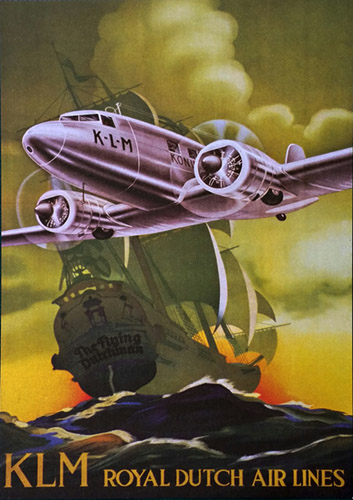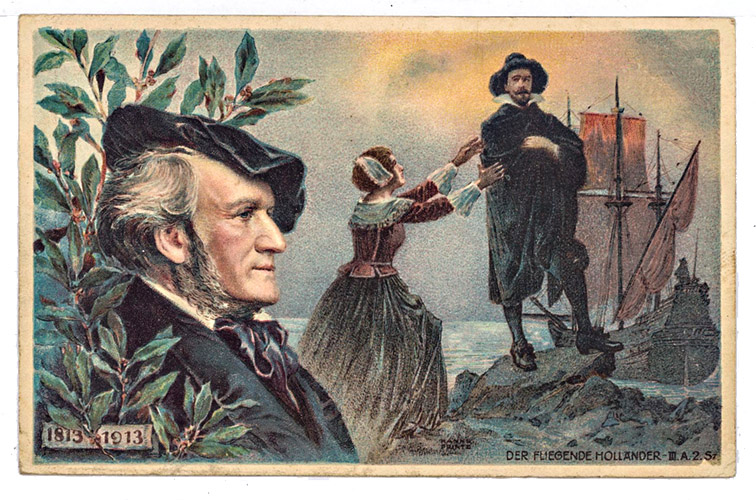'the Flying Dutchman'
You could first ask your students what they see (please remember the 5 W's), before giving this explanation:
At first glance this is an interesting and well-made poster, but look more closely and examine it. What does KLM (Royal Dutch Airlines) have to do with 'the Flying Dutchman'?- KLM is one of the biggest airlines, apart from gesjoemel with millions of government money, they are still 'well' known.
- The legend of the Flying Dutchman is not only known in the realm of the supernatural, it is also one of the most famous tales of the sea. For 300 years this ghost ship has cruised the seas around the Cape of Good Hope, bringing misfortune to any ship that comes near. The story of the Flying Dutchman has been known to generations of sailers and inspired Richard Wagner to write his famous opera 'Der Fliegender Hollander'.
see slide: #17-04
I do not really see the connection, do you? Or it must be the flying and Dutch. But, as a big airline company, I wouldn't like to be associated with a ghost .. Sounds bad for business.
So look, try to see, understand and - most important- form your own opinion. The truth may be more interesting than you think at first glance
A poster (read: advertising campain) like this isn't made overnight. There is an advertising agency, a lot of money and some bobo's involved, before this is marketed.
I realise of course, that it is highly unlikely that your young students will like operas (they might if they research the stories behind them) but Richard WAGNER wrote an opera also called 'The Flying Dutchman':
The sea was Richard Wagner’s inspiration for his 1843 opera Der fliegende Hollander (The Flying Dutchman). From July to August 1839, Wagner travelled from Riga to London, crossing the Baltic and the North Sea on a stormy journey. Wagner was on the run from his debtors, and the journey was so dangerous that his wife Minna suffered a miscarriage as they illegally crossed the Prussian border. The ship’s captain let them aboard without passports, which had been confiscated by the government to protect his debtors from his escape, and they faced with storms and high seas. The normally 8-day voyage ended three weeks later.
'The Flying Dutchman' (Pirates of the Caribbean)
The Pirates of the Caribbean franchise features a ship named 'the Flying Dutchman'. It made appearances in Pirates of the Caribbean: 'Dead Man's Chest' (2006) and 'Pirates of the Caribbean': 'At World's End' (2007), captained by Davy Jones until his heart was stabbed by Will Turner, who became the new captain of the Dutchman.
slide: 11-04-70 (2)
Was there a real Flying Dutchman?In real life the Flying Dutchman was a 17th century Dutch merchantman, captained by Captain Hendrick Van Der Decken, a skilled seaman but one of few scruples, and in 1680 was proceeding from Amsterdam to Batavia in the Dutch East Indies. Whilst attempting to round the Cape of Good Hope, a raging storm blew up but the captain was determined to proceed and not wait for the storm to die down. He is said to have cursed God and the elements, saying that he would rather sail till Doomsday than ride out at anchor. For this blasphemy he has been forced to sail the Southern Seas ever since without finding harbor. However it has been proved over the years that any ship that has visual contact with the Dutchman is doomed to some form of disaster and therefore it will be quite difficult to find a captain prepared to take the necessary letter.


